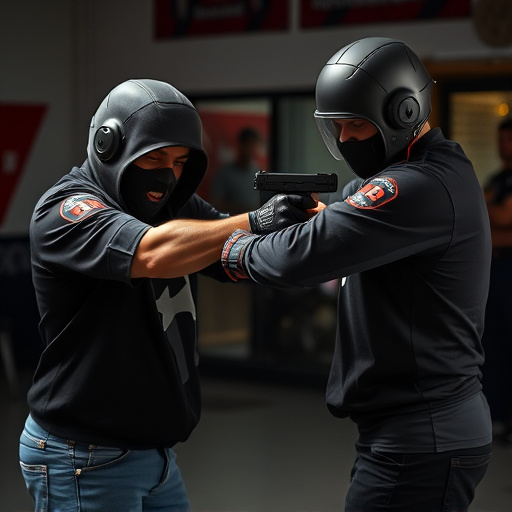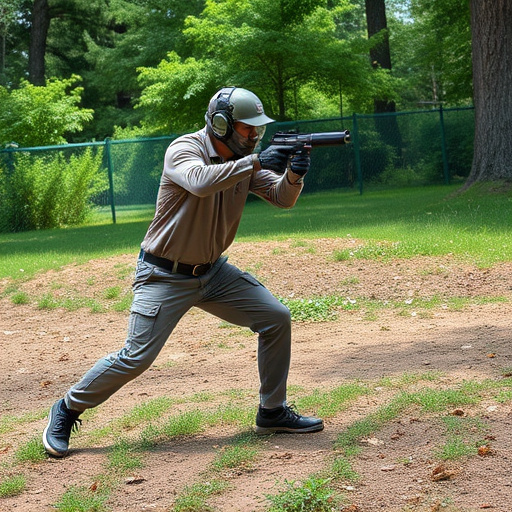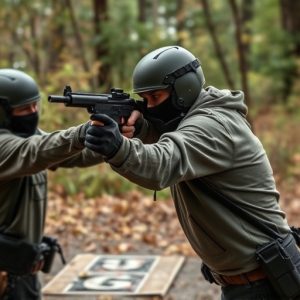Silent Stun Guns: Discreet Self-Defense Duration of Muscle Incapacitation
Silent stun guns deliver low-voltage, high-current electrical pulses to temporarily disable assailan…….
Silent stun guns deliver low-voltage, high-current electrical pulses to temporarily disable assailants without causing lasting harm. Their effectiveness and duration of incapacitation depend on power output, device type (lower voltage silent models potentially having shorter durations), target area, physical characteristics, and environmental conditions. Popular for discreet self-defense, these unassuming weapons allow users to defend themselves in crowded or close-quarters situations while preserving privacy and safety.
“Uncover the mysteries behind muscle incapacitation durations from stun guns, a critical aspect of personal defense strategies. This article delves into the science behind these devices, exploring how stun guns disrupt muscular function and the factors that determine their effectiveness. From understanding the mechanism to identifying key influencers, we provide insights into the duration of disability. Additionally, we highlight the rise of silent stun guns, offering a delicate balance between protection and discretion for those seeking discreet self-defense options.”
- Understanding Muscle Incapacitation: How Stun Guns Work
- Factors Influencing Duration of Disability from Stun Gun Usage
- Silent Stun Guns: Balancing Protection and Discretion for Self-Defense
Understanding Muscle Incapacitation: How Stun Guns Work

Understanding Muscle Incapacitation: How Stun Guns Work
Stun guns, also known as electroshock weapons, utilize electric current to disrupt muscle control in the body, leading to temporary incapacitation. Unlike traditional firearms that rely on kinetic energy, silent stun guns for discreet self-defense use low-voltage, high-current electrical pulses to achieve their effect. When activated, the device delivers a powerful jolt through the target’s body, causing immediate muscular spasms and loss of balance. This disruption in muscle function renders the individual unable to move or fight back effectively.
The duration of muscle incapacitation from a stun gun varies based on factors such as the model of the weapon, the amount of current delivered, and the target’s physical condition. Generally, a single, well-placed shock can render a person temporarily unconscious for several minutes, enough time for an individual to escape or for emergency services to arrive. However, it’s crucial to remember that stun guns are non-lethal weapons designed to incapacitate rather than harm; their effectiveness lies in disabling an assailant long enough to ensure safety without causing lasting injury.
Factors Influencing Duration of Disability from Stun Gun Usage

The duration of muscle incapacitation after using a stun gun can vary significantly based on several factors. One key consideration is the power output and the type of stun device employed, with higher voltage typically resulting in longer periods of disability. Silent stun guns for discreet self-defense, designed to temporarily disable without drawing significant attention, often have lower voltage settings, potentially leading to shorter incapacitation times.
Another influential factor is the target area of application. Stunning a person’s legs can result in quicker recovery due to reduced muscle mass and nerve density compared to targeting the torso or arms. Additionally, individual differences in physical fitness, age, and overall health play a role, as individuals with higher muscular endurance might recover faster than others. Environmental conditions, such as temperature and humidity, can also affect the body’s response to the stun, potentially impacting the duration of muscle incapacitation.
Silent Stun Guns: Balancing Protection and Discretion for Self-Defense

Silent stun guns have emerged as a popular choice for individuals seeking discreet self-defense options. These devices offer a unique balance between personal protection and the need for quiet, unassuming intervention in potentially dangerous situations. The primary appeal lies in their ability to incapacitate an assailant temporarily without drawing unnecessary attention, making them ideal for situations where stealth is crucial.
With silent stun guns, users can gain valuable time to escape or summon help without alerting attackers or bystanders with loud noise. This discretion is particularly valuable in close-quarters encounters or crowded places where loud sounds could lead to unintended consequences. By combining powerful electronics with advanced design, these stun guns deliver a significant electric shock while maintaining an unassuming profile, ensuring users can defend themselves effectively without sacrificing their privacy and safety.
Stun guns, especially their silent variants, offer a powerful tool for discreet self-defense. Understanding the muscle incapacitation duration and factors influencing it is crucial for effective and responsible usage. Silent stun guns balance protection with discretion, enabling individuals to defend themselves while minimizing lasting impact on assailants. By recognizing the intricacies of stun gun performance, users can make informed decisions, ensuring their safety and the wisdom of choosing silent stun guns for discreet self-defense scenarios.


